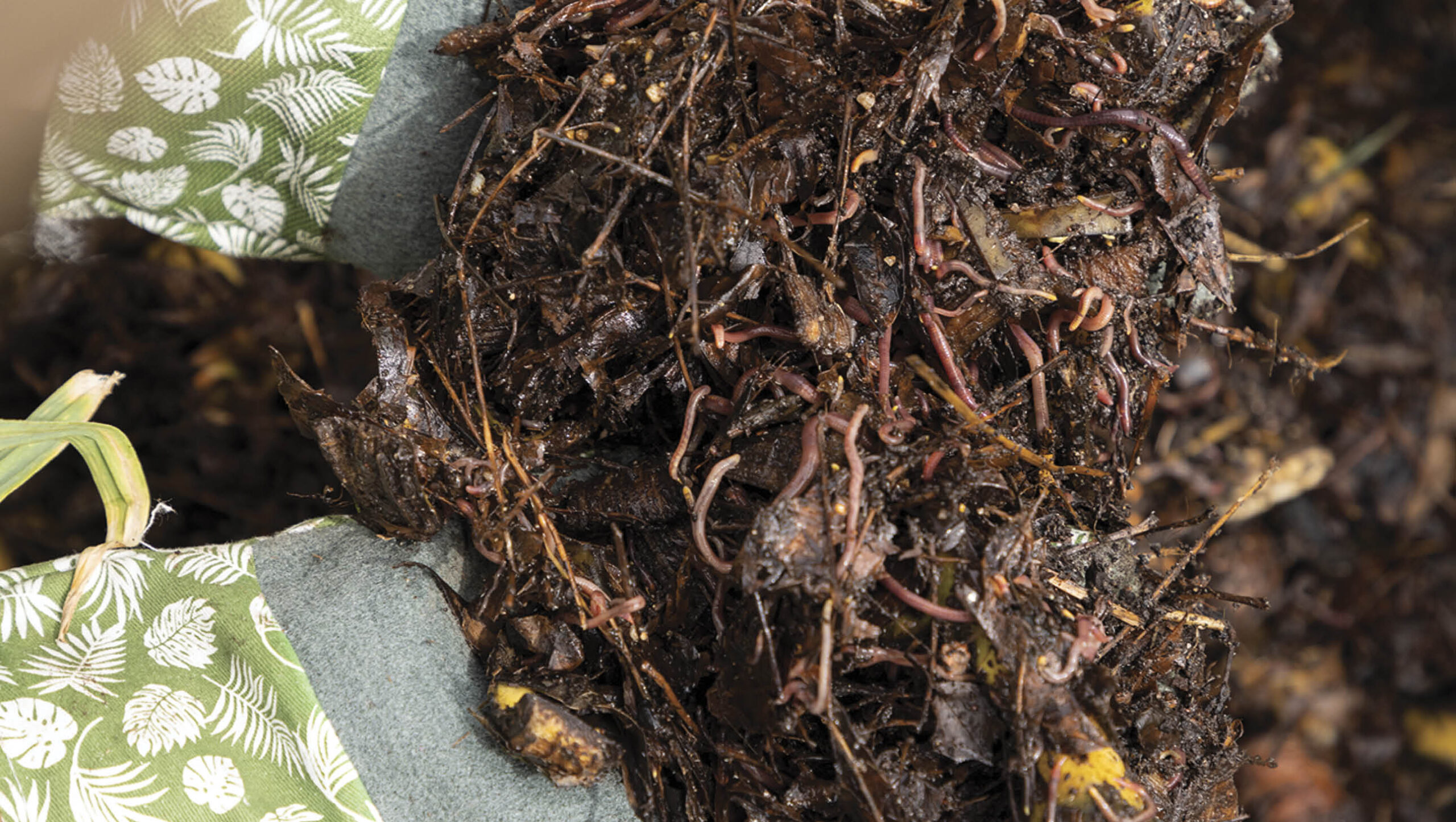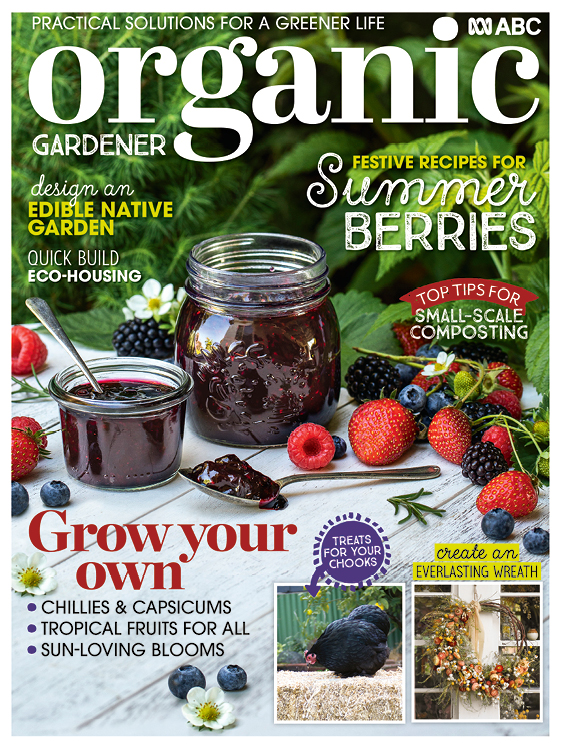Worms in small spaces
2023-12-07T01:57:50+11:00
Not everyone has a backyard with space for a compost or worm farm, but these ideas from Kate Flood will work on a benchtop or balcony.
If I asked you to close your eyes and imagine a picture-perfect compost set up – what do you see? Is it a three-bay system pumping out piles of steaming black gold? Or is it a Dalek-style compost bin full of worms, nestled in a verdant patch?
There’s no doubt these archetypes are a wonderful match to a private oasis in a sprawling suburb; but what can you do if you want to manage your household waste onsite, but don’t have your own garden? Not having access to soil can make composting more of a challenge, but it is possible to turn scraps into a valuable resource in a small house, apartment or tiny bedsit.
As our population increases, density in our cities is increasing. Thankfully, compost microbes and worms are an accommodating lot and don’t mind functioning in compact composting systems. You can even keep worms in small spaces.
Worms in small spaces
If you’re looking for some low-key company in your apartment, why not consider cohabitation with a horde of hungry worms? Compost worms are hardworking house guests in tiny homes. They will devour their dinner, clean up their own mess and you’ll be rewarded with lots of their precious poo to use on your plants in return. Worms don’t care if they are tucked into small farm that can be kept indoors or on a balcony. They don’t need lots of room to move and will happily chew through your scraps in a continuous flow bin, a traditional tiered system or even a DIY worm tower wedged into a garden pot.
There are plenty of commercial options available, but if you want to try making one yourself, here’s how.
DIY worm tower
This compact worm farm is great for apartment dwellers, as the whole unit can live in a large pot placed on a balcony or in a common area next to the garbage bins. You can replace the food grade bucket with PVC pipe if easier.
Equipment
One large garden pot with drainage holes
Repurposed food-grade plastic bucket with a lid
Drill with 8mm drill bit
Woodchips, brown leaves, or shredded paper
Soil, potting mix or compost
Gardening gloves
A handful of composting worms – red wrigglers (Eisenia fetida) is the best species to use; available from some garden centres and online

- Get your bucket and drill lots of holes in the sides and base using an 8mm drill bit.
- Add a 10cm layer of woodchips to the base of the pot, then position the bucket in the centre and backfill with compost, potting mix or soil.
- Add a handful or two of moist carbon bedding materials (such as decaying brown leaf litter, coconut coir or shredded cardboard) into the bucket.

- Add a handful of compost worms. These will multiply quickly, so you can use a handful from a friend’s farm if you don’t want to purchase your own.
- Slowly add food scraps, but don’t load up your farm with more scraps until the worms have almost finished their last meal. Make sure you add carbon each time you feed them, too, to keep the conditions aerobic.
- When the worm farm is full of castings, a lot of the worms will move out to the edges. Harvest your finished ‘garden gold’ from the bucket with a gloved hand and spread the love around your patch or indoor plants.
Just be mindful, you can kill worms with kindness, and overfeeding is often the main reason why small worm farms fail.

Kate Flood is a self-confessed compost nerd and sustainability educator. We published an excerpt from her new book The Compost Coach in our Spring 2023 issue (OG 143), and there’s more tips from Kate in our Summer 2024 issue (OG 146) available here.







